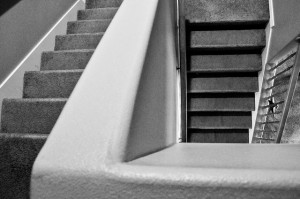Photography Tutorial: Are You Making These 3 ISO Mistakes?
When a photographer makes the courageous leap away from the “auto” setting on their camera, they have to keep a dozen things in mind every time they compose a shot. Shooting in manual mode allows for individual control of shutter speed, aperture, ISO, and focus point (among other things), and often takes a while to get the hang of. One must master the concepts and execution of all the technological aspects of digital photography, but once that happens the quality of work can improve exponentially.
Of the main pieces that go into making a digital image is the ISO, which represents your camera’s sensitivity to light. It has a direct correlation, meaning that a low ISO reflects a low sensitivity and a high ISO indicates a high sensitivity. Taking that one step further, an image shot with a low ISO is going to be darker than one shot with a high ISO. Most digital cameras on the market today have an ISO range of 100-6,400, and since it is an international standard, you can know that a setting of 800 is the same everywhere, whether your camera came from China, Russia, or anywhere else in the world.
Many photographers understand the basic function of ISO, but fail to really grasp its nuances and fail to finesse its settings to give more depth and quality to their images. Regardless of whether you’re a brand new beginner or a semi-pro, chances are good that you’ve made at least one of these mistakes.
- Using the same setting regardless of light conditions
Yes, there are plenty of people out there who focus all their time and energy on the shutter speed-aperture relationship and ignore their ISO altogether. Sadly, this third component is so crucial in balancing everything out and resulting in a more deliberate photo quality. When you leave your ISO at say, 1000, your outdoor images may be grainy and your indoor images may still be too dark. This puts a lot of burden on the aperture and shutter speed to try and make up the difference here, and the results are rarely nice.
Don’t be afraid to move around your ISO and find the right balance where you can still get the action or movement you need and the depth of focus you want. Never touching this setting is a surefire way to disappointment.
- Only using extremes

Image Credit: Flickr user r. nial bradshaw
Some new ‘photogs’ only consider light in its two extremes: bright sunlight and dark; or more simply, outdoors and indoors. And while those two light environments will require vastly different camera settings, much of our lives happens somewhere in the middle. Most places are neither bright nor completely dim, so it’s important to know how to use the middle swath of ISO to best complement these scenarios. There are a lot of beginners who think the lowest setting of ISO100 is the only one appropriate for outdoor work, while the highest possible ISO (3200 or 6400, typically) is what’s needed for any kind of indoor photography.
Both instances are wrong and can lead to poor image quality and yet many people immediately jump to how they could have changed their aperture or shutter speed in order to have avoided it. But ISO has more power than people think- don’t get stuck in the “all or nothing” game with light sensitivity. Learn to play around in the middle. Don’t assume that every house party needs an ISO of 6400, and don’t assume that every landscape shot is bright enough to get away with an ISO of 100.
- Relying on post-processing to fix it
There are plenty of things you can touch up in Photoshop, but ISO is not one of them. Attempting to salvage a severely underexposed image can be a lesson in futility, as can smoothing out grain (you can only hit “reduce noise” so many times before your photo starts looking really horrible – trust me). Many images that have been shot using the wrong ISO setting and have been patched up after the fact are painfully obvious.
So unless you are going for a very gritty, grainy vintage look, keep the ISO lower. The same goes for when you’re using a flash, which can sometimes amplify the noise. And if you need to preserve detail in a low-light situation, be sure to find an ISO setting that can detect those details without reducing the smooth quality. Taking a few more minutes to mindfully assess your environment and thoughtfully adjust your settings can save you a serious headache later.
If you are having a hard time grasping the components of digital photography, or feel like your photos could simply be better than they are, we have several classes that can help guide you to mastery of both your dSLR camera and your personal skill set. Come and check them out!
View all of our Photography classes

